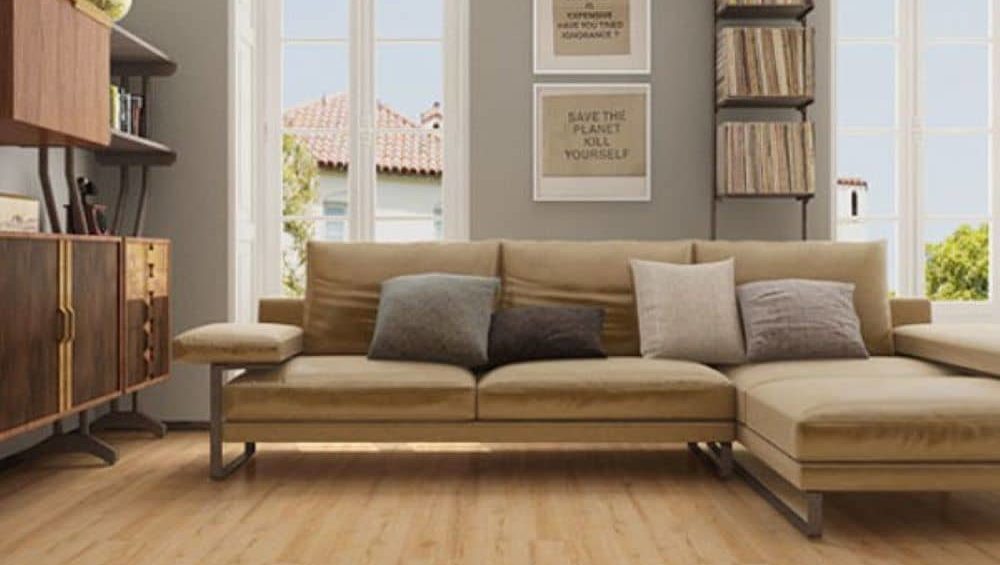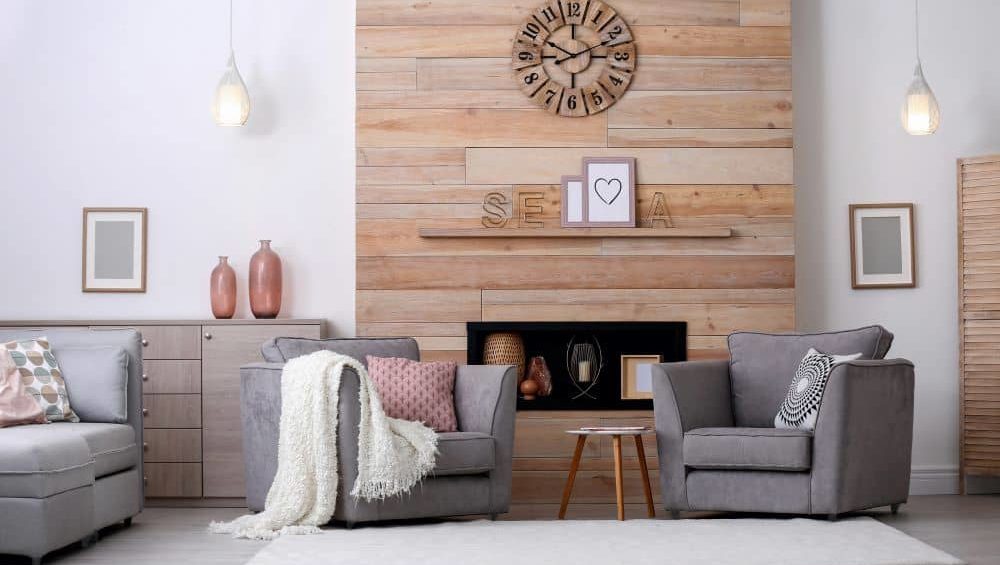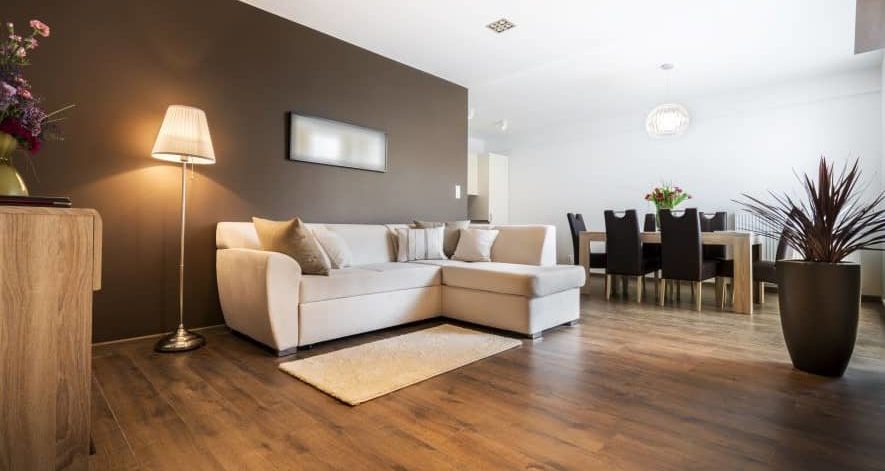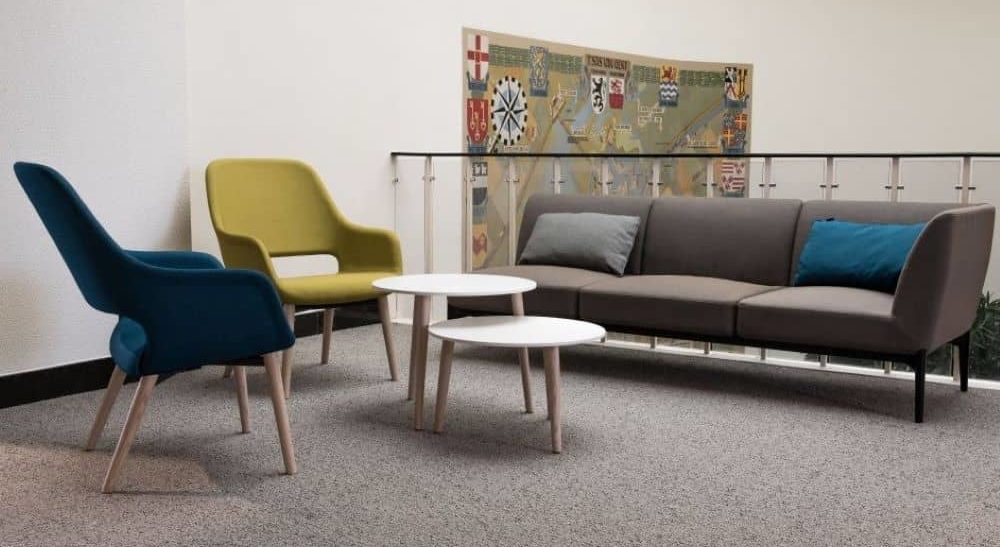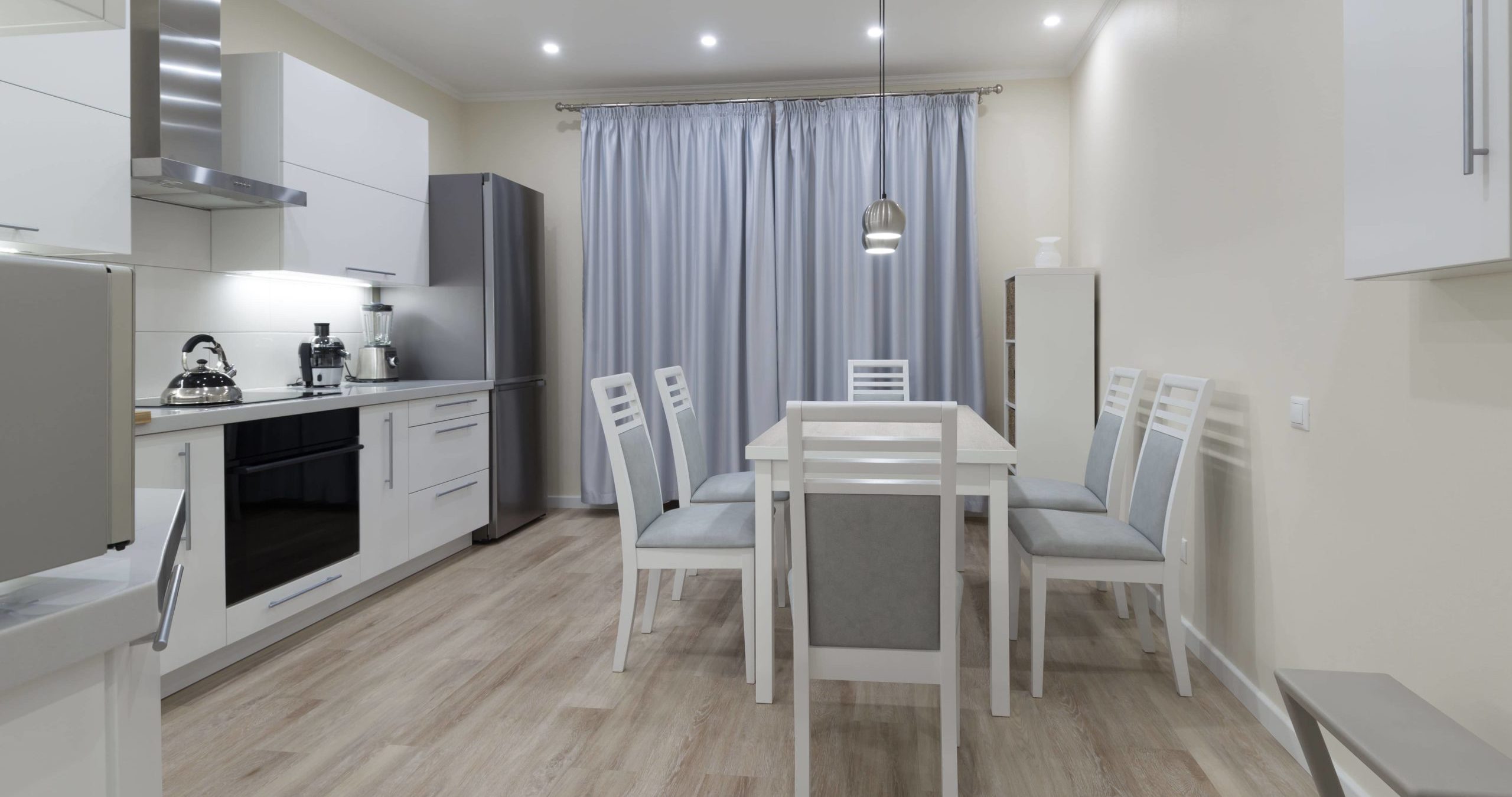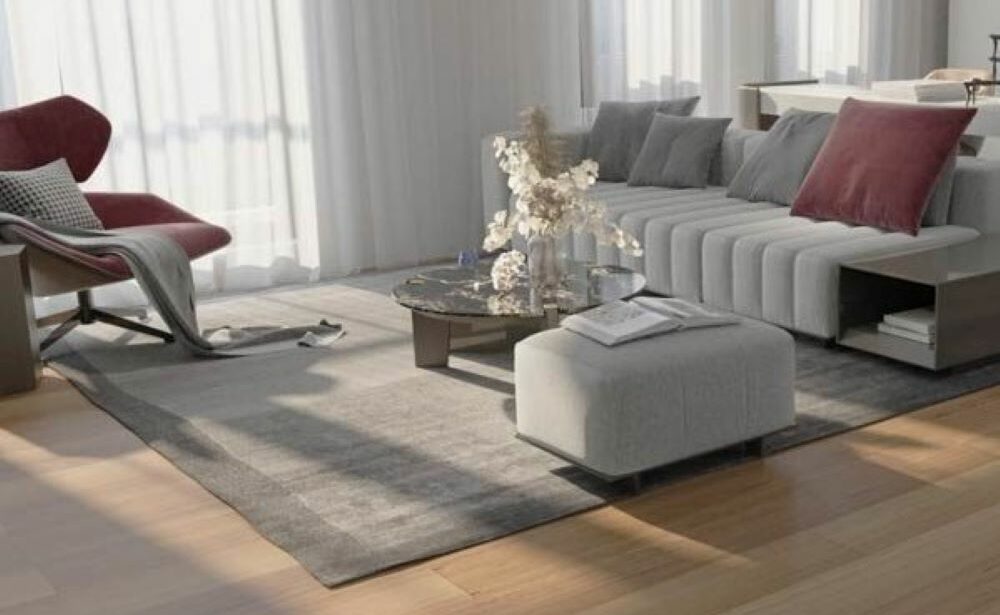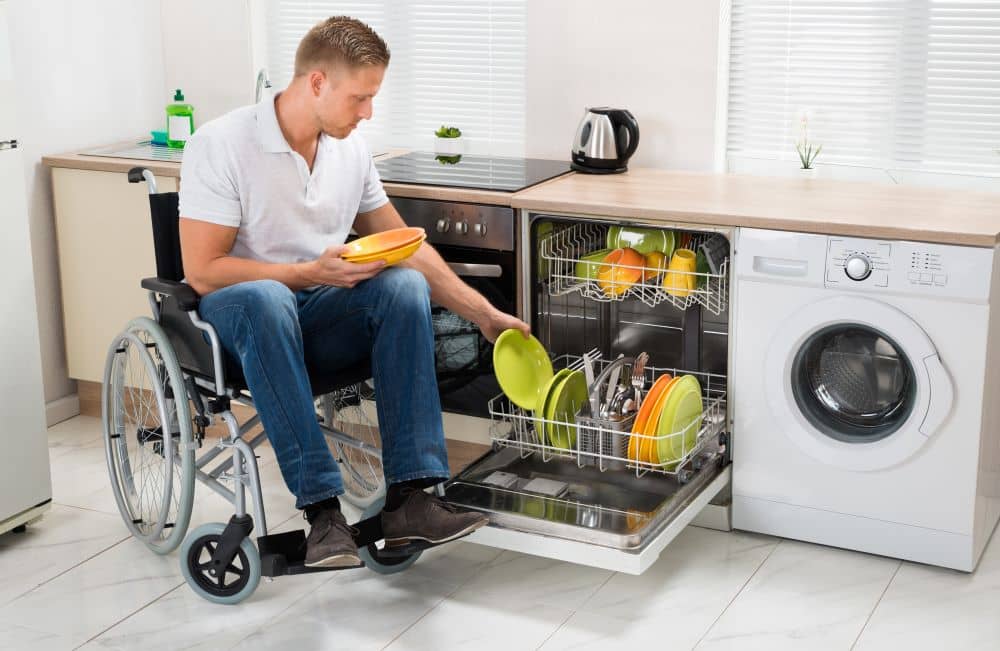If you or a family member has a disability or uses a wheelchair, you may have some additional concerns or questions when it comes to choosing the best flooring for your home.
Appropriate, quality flooring can make it easier to get around a household in a wheelchair, increase safety, and enhance accessibility. In this guide to disability-friendly flooring, we will cover key factors to consider when choosing a floor that will keep you and your family members safe and fit your needs.
Choosing the Best Flooring for Wheelchairs: 7 Tips
When looking for flooring suitable for wheelchairs or individuals with disabilities, it is important to look for a firm, stable, durable, and slip-resistant flooring option.
Here are 7 key considerations to keep in mind when selecting disability-friendly flooring:
1. Friction
The level of friction provided by a certain flooring type is important for wheelchair use and overall safety.
Ideally, flooring in a home where an individual uses a wheelchair, walker, or cane should be slip-resistant, meaning it has enough friction to provide grip without being so grippy that it prevents a wheelchair from moving smoothly across the floor. A flooring surface that is too grippy will require far more effort to glide a wheelchair over.
2. Texture
The texture of a floor also plays a big role in safe wheelchair use. This is where high pile carpet and tiles with raised and recessed parts become especially problematic.
A glossier finish on a flooring’s surface may provide less grip than a rougher surface.
3. Uniformity
Uniformity is another important concern for individuals who use a wheelchair. While many people take no notice to transition pieces between rooms, these areas can pose a significant obstacle for wheelchair users.
When possible, avoid the use of transition boards by choosing a flooring type that can be used continuously throughout several rooms or the entire house. If you do need transition pieces, be sure to have them installed as level as possible.
4. Aesthetic Appeal
You do not have to sacrifice appearance in favour of function. There is a wide range of flooring choices that will fit your design style as well as safety needs.
5. Durability
Durability is always a concern with flooring, but it is particularly important for wheelchair use. A wheelchair places significant pressure on a floor and may leave scuff marks, scratches, or dents on certain flooring surfaces.
6. Area of Use
The room the flooring will be installed in is an important consideration. For example, carpet is often a popular choice in bedrooms for the warmth and softness it offers, but perhaps you would prefer solid timber for the grip and smoothness it offers.
For bathroom floors or other wet areas such as laundries, it is crucial to consider how slippery the floor may become when wet.
7. Hardness
Flooring ranges in how forgiving it is underfoot. Options such as bamboo, timber, carpet, vinyl, or laminate will be slightly softer and more forgiving underfoot than stone, concrete or tile but still a hard surface to roll over for wheelchairs. Soft flooring such as carpet can be difficult for wheels to roll over.
If an individual uses a walker or cane, softer flooring options are often a more suitable choice than hard surfaces. The cushion of softer floors can help cushion falls, reduce slipperiness, and provide grip.
Preferred Options
There are several great wheelchair-friendly flooring options, each with its own set of pros and cons to consider. Here, we’ll look at low-pile, tight-weave carpet, hybrid, luxury, vinyl, bamboo, laminate, engineered timber, and timber flooring as potential options for wheelchair use.
Carpet
Do you like the warmth and comfort of the carpet? While carpeting that is too thick or plush is not an ideal choice for a wheelchair, it is possible to find a wheelchair-accessible carpet.
Look for carpeting with a tight weave and low pile. Also, make sure it is tightly secured to the subflooring so it lays completely flat and smooth.
If using rugs in your home, make sure to secure them underneath so they do not bunch up or move underneath wheelchair wheels.
Carpet can make an excellent choice for individuals who use a cane or walker as it provides grip and cushion underfoot. In the unfortunate event of a fall, carpeting can help provide vital cushioning and reduce the chance of injury.
Here are additional considerations for choosing carpet for wheelchair use:
- Use a Low, Loop pile carpet
- Commercial-grade carpet is worth considering
- Avoid thick carpet pads as they can be deformed and crushed by wheelchairs
Bamboo
Bamboo flooring is extremely hard-wearing and provides a stable, smooth, level surface to roll over. It is an excellent, affordable option worth considering if you are looking for wheelchair-friendly flooring.
Vinyl
Luxury vinyl flooring is a water-resistant, affordable option that provides:
- Good durability
- Easy maintenance
- A smooth, level surface that is easy to roll over
- A bit more forgiveness than solid timber in terms of hardness while still being hard enough to roll easily over
Luxury vinyl floors are constructed of various layers, including a backing and protective layer. High-quality luxury vinyl flooring should have thicker protective layers to enhance durability. Consumers may also want to consider a commercial-grade option with a thicker wear layer.
Laminate
Laminate flooring offers the aesthetic appeal of hardwood flooring without the price tag and maintenance. It is a great option for wheelchair users to consider as it provides a smooth, hard surface for easy rolling over.
If you decide to install laminate flooring in your home, choose a quality option with a protective layer that offers exceptional durability.
Hybrid
Hybrid flooring offers a smooth, level surface for rolling over. It also offers a variety of colour and pattern options to choose from, easy maintenance, and durability similar to hybrid flooring or luxury vinyl. The Terra Mater 9.7mm hybrid has a .7 heavy-duty wear layer.
Engineered Timber
With a real hardwood veneer, engineered timber can provide a beautiful option that can stand up to wheelchair use. The texture of the wood grain on engineered timber can provide additional slip resistance and traction.
When selecting a wood species, opt for something with a higher rating on the Higher Janke Rating. Softer species such as fir or pine will scuff and dent easier than harder species such as maple, hickory, or oak.
Solid Timber
Solid timber offers a beautiful surface that can be easily rolled over with a wheelchair. However, hardwood floors are prone to scratches and damage. It may be best to choose a wood that is harder and therefore more resistant to damage.
Opting for a floor with a matte as opposed to a polished finish will offer higher slip-resistance while still allowing a wheelchair to glide easily.
Is Tile Flooring A Good Choice for Wheelchairs?
While tiles provide a hard surface for wheelchairs to roll over, larger tiles may be at risk of cracking. Smaller tiles create additional friction, but too small of tiles means there will be a high number of grout lines to clean.
If you are building a new house or remodelling and need help choosing the best flooring for a wheelchair, please feel free to reach out to our caring team of experts for personalised help.
We can help you find a flooring option that suits your budget, needs, safety requirements, and style.



